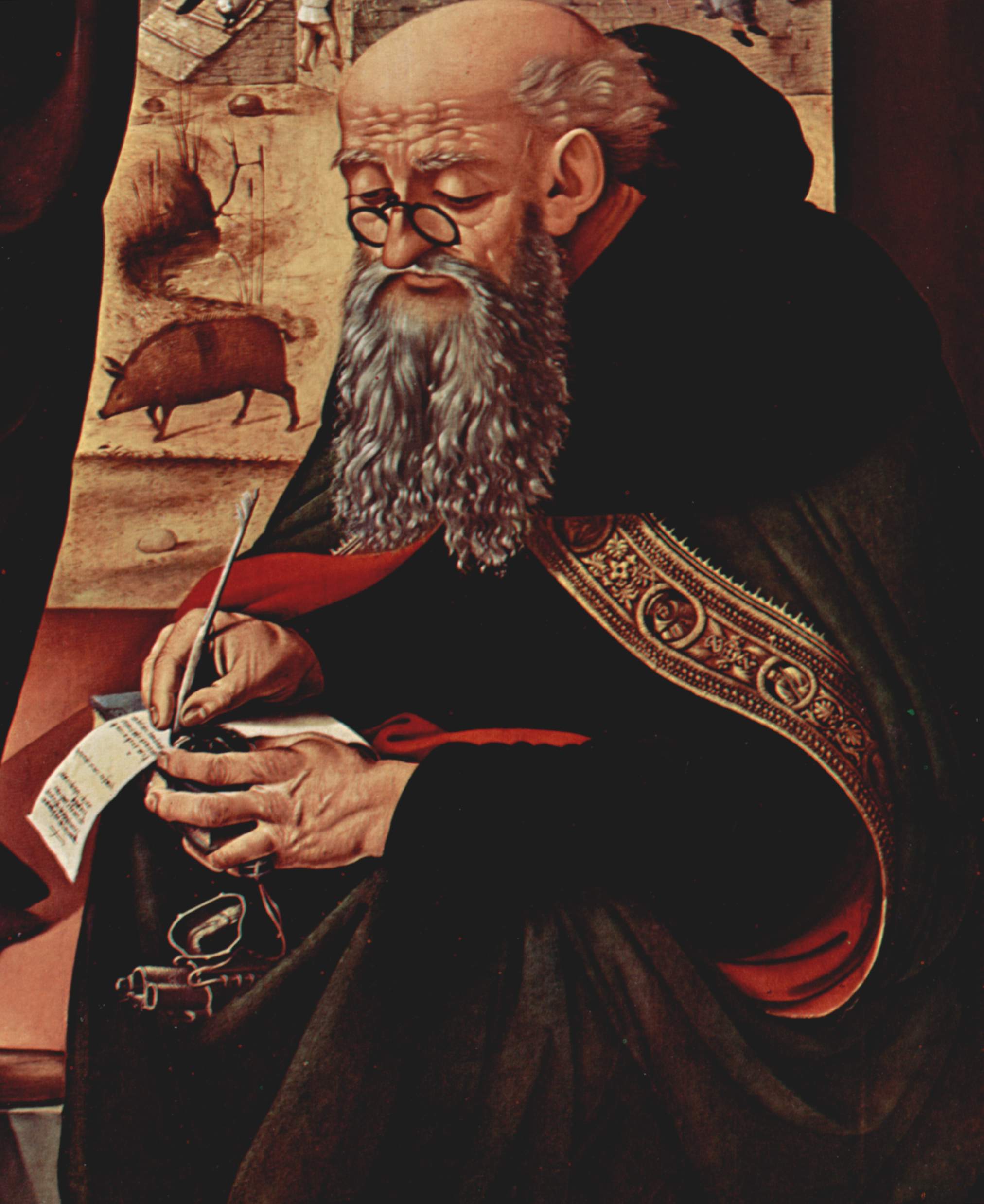|
Basil IV (Coptic Archbishop Of Jerusalem)
Basil IV, (Arabic language, Arabic: الأنبا باسيليوس, Coptic language, Coptic: Ⲁⲃⲃⲁ Ⲃⲁⲥⲓⲗⲓⲟⲥ), was the 20th Metropolitan of the Coptic Orthodox Archdiocese of Jerusalem, Holy and Great City of Our Lord, Jerusalem (Holy Zion), and Archbishop of the Holy and Ancient Archdiocese of Jerusalem, all Palestine and the Near East, from 1959, until his death in 1991. Early life He was born as Samy Tawadros Girgis (Arabic language, Arabic: سامي تاوضروس جرجس), in Asyut, Asyut Governorate, Asyut, Kingdom of Egypt, Egypt, on November 1, 1923; he was the fifth of six siblings. After completing his secondary education in 1940, he travelled to Cairo and met with Habib Girgis, Archdeacon Habib Girgis, seeking to be enrolled in the Coptic Theological Seminary, Coptic Theological and Clerical College. He graduated first of his class from the Coptic Theological Seminary, Coptic Theological and Clerical College, and received a Diploma in Theolog ... [...More Info...] [...Related Items...] OR: [Wikipedia] [Google] [Baidu] |
Wadi Al-Seer
Wadi Al-Seer or Wadi as-Seer ( ar, وادي السير, meaning "Valley of the Orchards") is an area in the Greater Amman Municipality named after a prehistoric queen that ruled the area, Queen Seer. It consists of ten neighborhoods, some of which are residential, other commercial, or both. Neighborhoods Wadi Al-Seer district contains ten neighbourhoods; Al-Rawabi, Swefieh, Jandaweel, Al-Rawnaq, Al-Sahl, Al-Diyar, Bayader, Al-Sina'a, Al-Kursi and west Umm Uthaina. Bayader Wadi Al-Seer Bayader Wadi as-Seer neighbourhood is a small low-income town on the outskirts of the Greater Amman Municipality. It contains some Ottoman-era buildings and mosques from the early 20th century. 10 kilometres outside Wadi as-Seer are the ruins of the Qasr al-Abd castle and the related caves of Iraq al-Amir. Wadi as-Seer city contains a well known historical courthouse, an old fort, an entire Ottoman-style neighbourhood standing on extremely steep hills that are enveloped by European narrow str ... [...More Info...] [...Related Items...] OR: [Wikipedia] [Google] [Baidu] |
Asyut Governorate
AsyutAlso spelled ''Assiout'' or ''Assiut'' ( ar, أسيوط ' , from ' ) is the capital of the modern Asyut Governorate in Egypt. It was built close to the ancient city of the same name, which is situated nearby. The modern city is located at , while the ancient city is located at . The city is home to one of the largest Coptic Catholic churches in the country. History Names and etymology The name of the city is derived from early Egyptian Zawty (''Z3JW.TJ'') (late Egyptian, Səyáwt) adopted into the Coptic as Syowt , which means "''Guardian''" of the northern approach of Upper Egypt. In Graeco-Roman Egypt, it was called Lycopolis or Lykopolis ( el, Λυκόπολις, ""), ('wolf city') Lycon, or Lyco. Ancient Asyut Ancient Asyut was the capital of the Thirteenth Nome of Upper Egypt (''Lycopolites Nome'') around 3100 BC. It was located on the western bank of the Nile. The two most prominent gods of ancient Egyptian Asyut were Anubis and Wepwawet, both funerary deit ... [...More Info...] [...Related Items...] OR: [Wikipedia] [Google] [Baidu] |
Doctor Of Philosophy
A Doctor of Philosophy (PhD, Ph.D., or DPhil; Latin: or ') is the most common Academic degree, degree at the highest academic level awarded following a course of study. PhDs are awarded for programs across the whole breadth of academic fields. Because it is an earned research degree, those studying for a PhD are required to produce original research that expands the boundaries of knowledge, normally in the form of a Thesis, dissertation, and defend their work before a panel of other experts in the field. The completion of a PhD is often a requirement for employment as a university professor, researcher, or scientist in many fields. Individuals who have earned a Doctor of Philosophy degree may, in many jurisdictions, use the title ''Doctor (title), Doctor'' (often abbreviated "Dr" or "Dr.") with their name, although the proper etiquette associated with this usage may also be subject to the professional ethics of their own scholarly field, culture, or society. Those who teach at ... [...More Info...] [...Related Items...] OR: [Wikipedia] [Google] [Baidu] |
Master Of Science
A Master of Science ( la, Magisterii Scientiae; abbreviated MS, M.S., MSc, M.Sc., SM, S.M., ScM or Sc.M.) is a master's degree in the field of science awarded by universities in many countries or a person holding such a degree. In contrast to the Master of Arts degree, the Master of Science degree is typically granted for studies in sciences, engineering and medicine and is usually for programs that are more focused on scientific and mathematical subjects; however, different universities have different conventions and may also offer the degree for fields typically considered within the humanities and social sciences. While it ultimately depends upon the specific program, earning a Master of Science degree typically includes writing a thesis. The Master of Science degree was first introduced at the University of Michigan in 1858. One of the first recipients of the degree was De Volson Wood, who was conferred a Master of Science degree at the University of Michigan in 1859. Al ... [...More Info...] [...Related Items...] OR: [Wikipedia] [Google] [Baidu] |
Anthony The Great
Anthony the Great ( grc-gre, Ἀντώνιος ''Antṓnios''; ar, القديس أنطونيوس الكبير; la, Antonius; ; c. 12 January 251 – 17 January 356), was a Christian monk from Egypt, revered since his death as a saint. He is distinguished from other saints named Anthony, such as , by various epithets: , , , , , and . For his importance among the Desert Fathers and to all later Christian monasticism, he is also known as the . His feast day is celebrated on 17 January among the Orthodox and Catholic churches and on Tobi 22 in the Coptic calendar. The biography of Anthony's life by Athanasius of Alexandria helped to spread the concept of Christian monasticism, particularly in Western Europe via its Latin translations. He is often erroneously considered the first Christian monk, but as his biography and other sources make clear, there were many ascetics before him. Anthony was, however, among the first known to go into the wilderness (about AD 270), whic ... [...More Info...] [...Related Items...] OR: [Wikipedia] [Google] [Baidu] |
Cairo Governorate
Cairo Governorate is one of the 27 governorates of Egypt. It is formed of the city of Cairo, both the national capital of Egypt and the governorate's, in addition to five satellite cities: the New Administrative Capital - set to become the seat of national government, New Cairo, Shourok, Badr, Capital Gardens, and 15th of May. These cities form almost half of the Greater Cairo metropolitan area by population. Cairo Governorate is one of the 27 governorates of Egypt. It is formed of the city of Cairo, both the national capital of Egypt and the governorate's, in addition to five satellite cities: the New Administrative Capital - set to become the seat of national government, New Cairo, Shourok, Badr, Capital Gardens, and 15th of May. These cities form almost half of the Greater Cairo metropolitan area by population. As one of three city-states in Egypt, where the Cairo governor is also the head of the city. This rightfully creates much confusion and synonymity between t ... [...More Info...] [...Related Items...] OR: [Wikipedia] [Google] [Baidu] |
Beni Suef Governorate
Beni Suef ( ar, محافظة بني سويف ') is one of the governorates of Egypt. It is situated in the center of the country. Overview This governorate's capital is the city of Beni Suef, located about 120 km south of Cairo on the west bank of the Nile River. The area is well known in Egypt for its cement factories. The nearby Meidum pyramid is the only prominent tourist attraction in the area. Due to different ways of transcribing the spelling it can also be known as Beni Suef, or Beni Swaif. The rate of poverty is more than 60% in this governorate but recently some social safety networks have been provided in the form of financial assistance and job opportunities. The funding has been coordinated by the country's Ministry of Finance and with assistance from international organizations. Municipal divisions The governorate is divided into the following municipal divisions for administrative purposes with a total estimated population as of July 2017 of 3,171,186. In ... [...More Info...] [...Related Items...] OR: [Wikipedia] [Google] [Baidu] |
Nasser, Egypt
Nasser ( ar, ناصر), older name is Bush ( ar, بوش, is a city and corresponding Markaz (country subdivision), markaz in Beni Suef Governorate, Egypt. It is named after former Egyptian President Gamal Abdel Nasser. The city was called ''Pois'' () in Ptolemaic and Byzantine Egypt. The 1885 Census of Egypt recorded Bush (as ''Boche'') as a nahiyah under the district of Beni Suef Beni Suef ( ar, بني سويف, Baniswēf the capital city of the Beni Suef Governorate in Egypt. Beni Suef is the location of Beni Suef University. An important agricultural trade centre on the west bank of the Nile River, the city is located 11 ... in Beni Suef Governorate; at that time, the population of the city was 7,091 (3,554 men and 3,537 women). Demographics As of 2019, the estimated population of Nasser markaz was 393,002, of whom 264,887 lived in rural areas and 128,115 in urban areas. References Populated places in Beni Suef Governorate {{egypt-geo-stub ... [...More Info...] [...Related Items...] OR: [Wikipedia] [Google] [Baidu] |
Sohag Governorate
Sohag Governorate is one of the governorates of Egypt. It is located in the southern part of the country (Upper Egypt), and covers a stretch of the Nile Valley. Since 1960, its capital has been the city of Sohag. Prior to that, the capital was the city of Girga and the name of the governorate was Girga Governorate. Overview The rate of poverty is more than 60% in this governorate but recently some social safety networks have been provided in the form of financial assistance and job opportunities. The funding has been coordinated by the country's Ministry of Finance and with assistance from international organizations. In early 2019, some residents of the poorer villages of Sohag were able to move into their new homes built, in part, with aid from the National Bank of Kuwait. There was a celebration for the completion of 115 homes where residents also received cattle and other gifts. Archaeology In April 2019, the archaeological mission of the Ministry of Antiquities led by ... [...More Info...] [...Related Items...] OR: [Wikipedia] [Google] [Baidu] |
Girga
Girga ( arz, جرجا ), alternatively Digirga or Digurga is a city in the Sohag Governorate of Upper Egypt. It is located on the west bank of the Nile River. Metropolitan see of the Coptic Orthodox Church. Name The name of the city comes from , which is also preserved in possibly corrupted and its alternative name Digirga. Some Egyptologists such as Brugsch believe that the name of the city derives from the ancient Egyptian word ''grg miri-amoun Ramessou'' which means "The establishment of Ramesses II", although Daressy and Budge identify the name with Coptic Balyana near Abydos. Through folk etymology the city became associated with St. George and a now non-existent monastery dedicated to him nearby, hence Leo Africanus calls it ''Giorgia'' and Pest suggests an older vocalisation ''Gurga''. Overview Girga was the capital of the Girga Governorate until 1960, when the capital was moved to Sohag and the name of the governorate changed accordingly. Girga has an estimated ... [...More Info...] [...Related Items...] OR: [Wikipedia] [Google] [Baidu] |
Habib Girgis
Archdeacon Habib Qozman Mankarious Girgis (Habib Girgis : ar, القديس حبيب جرجس for ''"Beloved" George'' ; 1876 – 21 August 1951) was a modern-day dean of the Catechetical School of Alexandria. He was the very first student for the modern-day Theological School, and was thus appointed to succeed his predecessor, Youssef Bey Mankarious, in the year 1918, as the second dean of the renewed center of theology. On 20 June 2013, he was canonised as a saint by the Holy Synod of the Coptic Orthodox Church. Early work Before he became the head of renowned Theological Seminary, Habib Girgis felt that preaching and adult education were not sufficient for the advancement of the Coptic Orthodox Church. Protestant and Catholic missionaries have been at work since the mid-nineteenth century, with the aim to radically influence the views of the Copts in order to abandon their long lasting faith in Oriental Orthodoxy. Thus, with many issues at hand, Habib Girgis decided t ... [...More Info...] [...Related Items...] OR: [Wikipedia] [Google] [Baidu] |
Coptic Language
Coptic (Bohairic Coptic: , ) is a language family of closely related dialects, representing the most recent developments of the Egyptian language, and historically spoken by the Copts, starting from the third-century AD in Roman Egypt. Coptic was supplanted by Arabic as the primary spoken language of Egypt following the Muslim conquest of Egypt and was slowly replaced over the centuries. Coptic has no native speakers today, although it remains in daily use as the liturgical language of the Coptic Orthodox Church and of the Coptic Catholic Church. Innovations in grammar, phonology, and the influx of Greek loanwords distinguish Coptic from earlier periods of the Egyptian language. It is written with the Coptic alphabet, a modified form of the Greek alphabet with several additional letters borrowed from the Demotic Egyptian script. The major Coptic dialects are Sahidic, Bohairic, Akhmimic, Fayyumic, Lycopolitan, and Oxyrhynchite. Sahidic Coptic was spoken between the cities ... [...More Info...] [...Related Items...] OR: [Wikipedia] [Google] [Baidu] |
.jpg)






_-_TIMEA.jpg)
